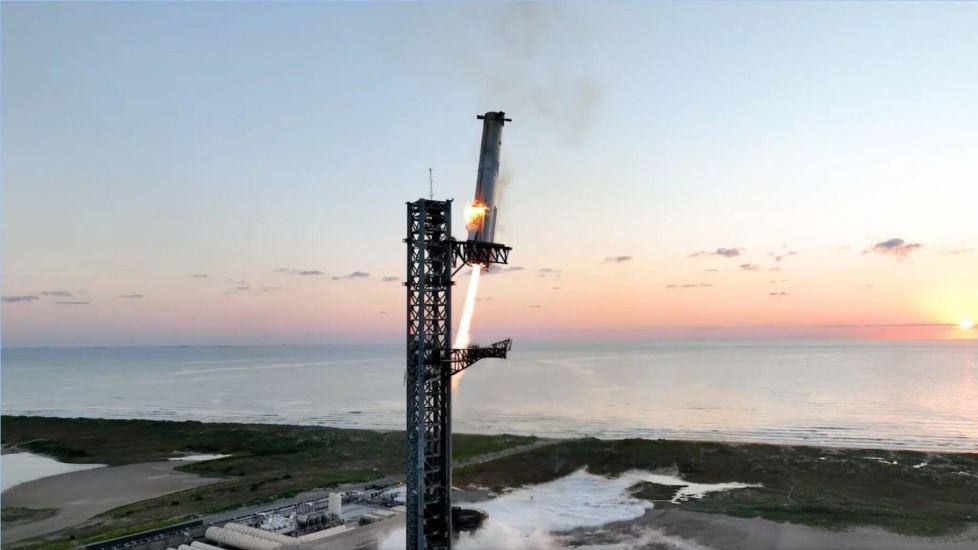Space X catches rocket booster in mid-air for the first time

- Published
For the first time, a part of a space rocket has been successfully caught on its return to Earth.
The SpaceX Starship rocket took off from the US state of Texas, before the bottom part of it, known as the booster, separated from the rest of the vehicle.
It was then guided back gently to the launch pad - and caught by a huge pair of mechanical arms, whilst still in the air.
Scientists say the huge achievement brings the company closer to its plan of being able to make rockets that can be re-used.
Watch: SpaceX Starship booster caught in mid air
More space news
- Published6 days ago
- Published1 October
What happened?
Starship lifted off at sunrise from Boca Chica Beach in Texas for its fifth test flight and blasted out of the Earth's atmosphere.
Around two and three-quarter minutes later, the bottom part of it - known officially as the Super Heavy booster - separated from the rest of the rocket.
Rather than have the booster land in the ocean, which is what usually happens, Space X's engineers achieved something that's never been done before.
They managed to slow down the booster, which was travelling at a speed of more than 17,000 mph, whilst it re-entered the atmosphere and guide it gently back down to the launch pad.
When it approached the 146metre high landing tower, its raptor engines worked to control its landing.
The booster was then caught in a huge pair of mechanical arms - a bit like catching food in between two chopsticks.
The booster was gently lowered back to the launchpad
The Ship part of the rocket, which is where equipment and crew will eventually be held for future missions, fired up its own engines after separating from the booster.
It was successfully landed in the Indian Ocean around forty minutes later.
Engineers involved with the missions said the achievement was a "day for the history books," as the booster landed safely.
SpaceX boss Elon Musk wrote on social media: "Ship landed precisely on target! Second of the two objectives achieved."
Not only was the Ship landed accurately but SpaceX also managed to preserve some of the vehicle's hardware, which it had not expected.
SpaceX plans to make fully reusable space rockets in the future.
Experts say that catching the booster, rather than getting it to land on the launch pad, reduces the need for complex technology on the ground.
It also means that rockets can be quickly redeployed again in the future.
SpaceX also wants to design a rocket system will one day take humans to the Moon, and then on to Mars, making humans "multi-planetary".
US space agency Nasa, has paid the company more than £2billion to develop Starship into a lander capable of returning astronauts to the Moon's surface by 2026.
